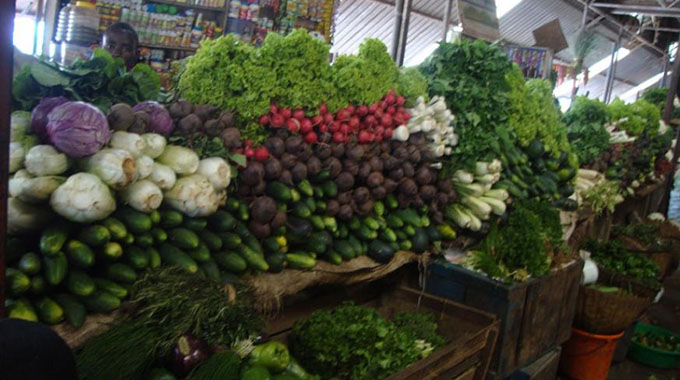Horticulture players upbeat of improved blueberry exports
THE Horticultural Development Council (HDC) is upbeat of improved blueberry exports in 2024 on account of plant maturity and opening up of markets in China and India.
In 2023, local farmers planted 570 hectares of blueberries and managed to export 5500 tonnes.
It is from that base that the HDC intends to yield and export approximately 8000 tonnes of the berries in 2024 spurred by expected impetus from the new markets.
This anticipated increase is also projected to come from plant maturity which translates to increased yield, compared to previous years.
This comes at a time when the council is also advancing the production of citrus, coffee and flowers across the country.
According to Zimbabwe Investment Development Agency’s (ZIDA) HDC last year submitted its plans to secure an additional 4 000 hectares for blueberry production estimated to cost US$140 million.
For coffee production, the HDC aims to establish and manage 1 000 hectares of coffee in the eastern highlands and support 1 300 small and medium scale coffee producers to produce about 2,220 tonnes per year with a gross value of over US$11 million annually and creating more than 2, 000 jobs.
This reflects the potential for new investment, which can be possible with more supportive policy measures.
“In 2024, we expect blueberry production to increase to 8000 tonnes from 5500 tonnes last year. Most of this growth is from plant maturity and increased yield, and not from new plantings, which we would like to see. Growth has been slower than expected due to higher production costs and a lack of funding. Opening up new markets (India, China) will be key, and we are re-working with Ministry of Agriculture to push for access.
“Opening up markets in China and India will increase the impetus for increased production. Achieving this will require a protocol being signed by the respective governments and the industry is urging more effort in the process,” said HDC Chief Executive Officer Linda Nielsen in an interview recently.
In September 2022, the Treasury allocated US$30 million horticulture export revolving fund from the International Monetary Fund (IMF) Special Drawing Rights.
The fund is meant to capacitate local horticulture farmers in enhancing production and capacity to tackle challenges related to the unavailability of appropriately structured financing for short to long-term expenditures.
Increasing horticultural production through value addition and beneficiation is in line with the National Development Strategy 1 (2021-2025), whose main objective is to structurally transform Zimbabwe’s economy from one that is highly dependent on the export of agricultural raw materials to an economy trading in high value processed goods.
On the other hand, First Capital Bank (FCB) and NMB bank received a €12, 5 million lines of credit apiece from the European Investment Bank (EIB) in June 2022 to support export-focused sectors of the economy including the horticulture sector.
Both banks have since indicated that they would continue to look out for more lines of credit to satiate the huge demand coming from its exporting clientele.
“The blueberry sector is one of Zimbabwe’s best stories. But to grow, it will need all the support it can get. The industry has applied for Special Economic Zones designation and we hope this application will be expedited so that we can open up the industry to new investment and financing,” added HDC.
Trade expert, Josephine Zikomo, said local horticulture sector has immense potential but requires a lot of effort from government and relevant stakeholders as well as constant financial support from banks.
“Financing allows horticulture producers to invest in modern technology, equipment, and infrastructure which translate improved productivity.
“This can help producers to stay competitive in foreign markets which ensure sustainable business operations,” she said.
HDC said it hopes the horticulture sector will be treated as a priority.
It called for policy interventions that would spur this promising industry’s growth for Zimbabwe not to miss out on a strong opportunity to position itself as a leader on the global stage.
The 75 – 25 percent export retention, high cost of finance and lack of patient capital (with favourable interest rates)) continue to be biggest threats and will likely affect the viability of new.-ebusnessweekly










